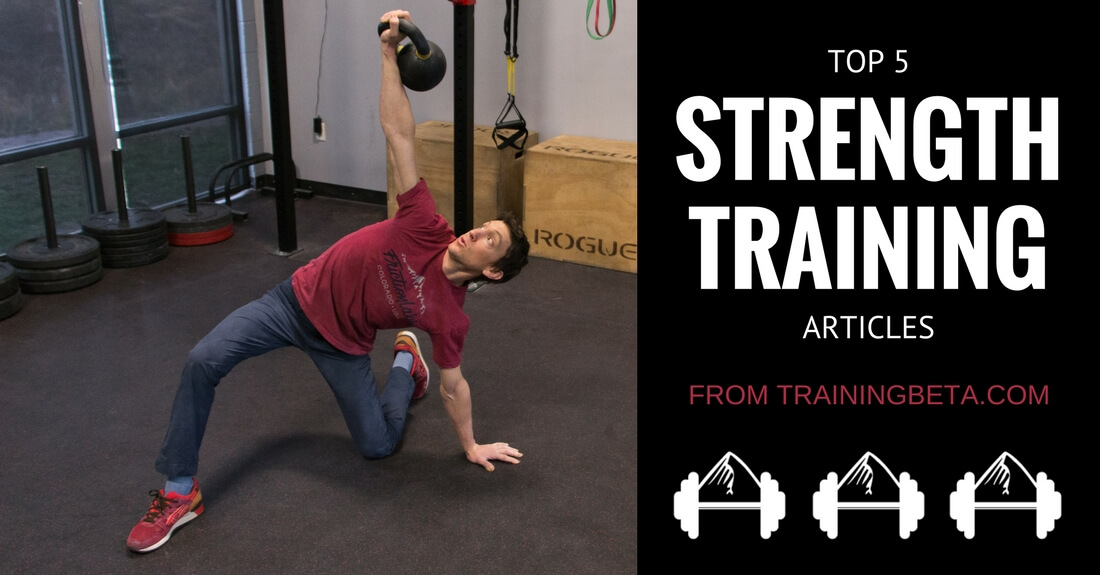Strength is the basis of hard rock climbing. If you aren’t strong enough for a climb, no amount of endurance is going to get you to the chains.
Now, when it comes to rock climbing, we all know that finger strength is important. However, strength training for climbing should involve more than just the fingers. Training total body strength will not only help our climbing performance, but it’s also a great form of injury prevention. To put it simply, stronger more well rounded athletes are just more durable.
Now, there are lots of different ways to train strength for climbing. To help you decide exactly what you should be doing, here are the top 5 strength training articles from the TrainingBeta Blog. You don’t need to do every exercise listed in these articles. But, if you make room for strength sessions in your training and follow the major principles in these articles, you’ll become a much stronger and durable athlete.
Top 5 Strength Training Articles
-
8 Functional Strength Training Exercises for Climbing
- “Climbers need to know that just climbing can only take you so far. By not training strength you will not reach your full potential as an athlete.”“Remember, we see strength training in all sports, right? You could be a 100m sprint track and field stud, going for the gold in curling, or performing at the highest levels in beach volleyball. The amount and degree of time in the weight room might differ from sport to sport, but strength training is still implemented across the board.” – Charlie Manganiello
-
Gymnastic Rings: Strength Training for Climbing
-
“Gymnastic rings are a powerful training tool that can be used to train the core, shoulders, chest, and body tension. They are a great way to do opposition training and boost your overall strength while working to stay injury free.” – TrainingBeta
-
-
Strength Training: The 4 Basic Movements You Should Be Doing
- “When I was just starting my love affair with athletics and moving heavy weights, the science of how to train for sport hadn’t trickled down to the teenage set. Despite how clueless we were, we inadvertently got one thing right… we were doing all 4 basic movements.
“Squat. Hinge. Push. Pull.”
“As I’ve mentioned before, we also did millions of bicep curls, whole sessions of umpteen variations, but that’s beside the point.” – Kris Hampton
- “When I was just starting my love affair with athletics and moving heavy weights, the science of how to train for sport hadn’t trickled down to the teenage set. Despite how clueless we were, we inadvertently got one thing right… we were doing all 4 basic movements.
-
Improve Your Hip Mobility And Core Strength
- ““The set-up will be three lifts and three mobility exercises. You’ll do this for 4 weeks 2 times a week. Remember we are just strengthening a weak link, not training to be the next big power lifter. Climbing is very sport specific. We only need to be “strong enough,” so keep the weight at 75-80% of your max. If you don’t know your max there will be some trial and error involved. I recommend starting light and then once you learn the lift you can start increasing the load. It’s very important to find the right load for you. If you go too light you won’t see any gains and if you go too heavy you’ll end up injured.” – Charlie Manganiello
-
Power and Strength: What They Are and How to Train Them
- “So, we can say that there are many people out there who are very strong climbers (i.e. they can grab very small holds and exert a lot of force on the hold), but they wouldn’t necessarily be powerful climbers. For example, a very controlled static climber might be able to do very difficult static movements where speed of recruitment is not an issue, however when that climber is given the task of jumping to and grabbing a hold he/she lacks the coordination and ability to recruit the required strength before falling.” – Seth Lytton
Cover photo courtesy of Matt Pincus | @mpincus87





Leave A Comment